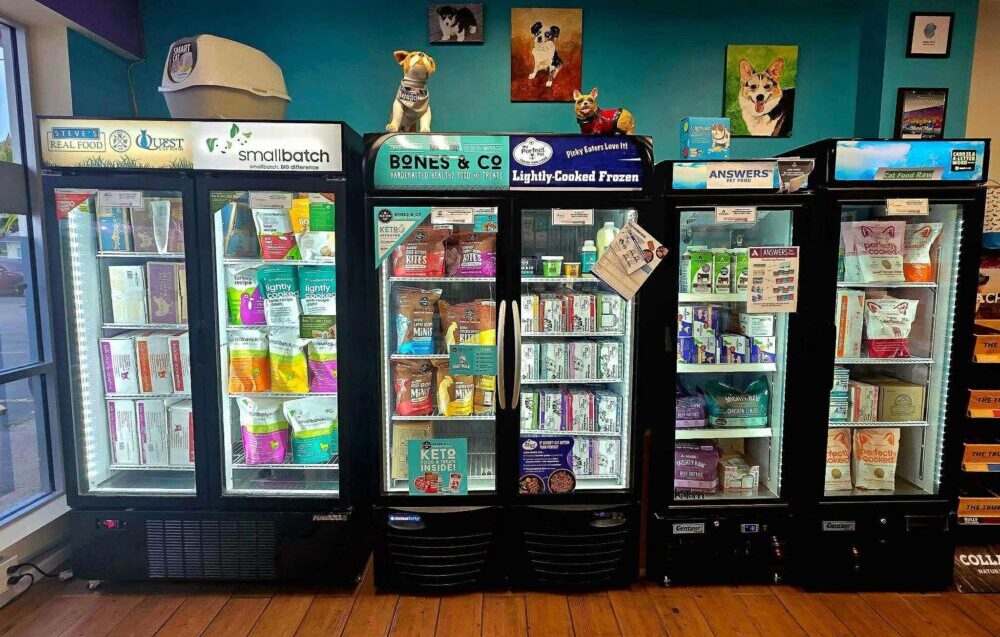Yes, it can — especially if your dog’s itching is linked to food sensitivities. Dr. Gary’s recipes are made with high-quality proteins and avoid common fillers like corn, wheat, and soy, which often trigger reactions.
Most formulas include omega-3 and omega-6 fatty acids from sources like salmon oil or flaxseed. These help improve skin hydration, reduce inflammation, and promote a healthy, shiny coat.
We recommend:
Salmon with Vegetables: Great for dogs sensitive to chicken or beef.
Holistic Grain-Free: Ideal for dogs avoiding common grains.
Working Dog or Field Dog Diets: Perfect for active dogs needing skin-supportive nutrients.
If your dog has a diagnosed allergy to a specific protein (like chicken or lamb), check the ingredient list carefully. You may need a single-protein, limited-ingredient formula — or reach out for informed advise.
No. If the cause is environmental (like pollen or dust), parasites (fleas or mites), or skin infections (yeast or bacteria), a dietary change alone may not help.
Give it 4 to 6 weeks to assess changes in your dog’s skin and coat condition. Keep notes on symptoms, and avoid switching foods too quickly.
Yes — especially if your dog has chronic symptoms, known allergies, or other health issues. A vet can help confirm whether a food trial is the right next step.


Yes. Raw diets often eliminate fillers and grains that can trigger sensitivities and include nutrients that promote healthy skin and coat.
Choose a novel protein (one your pet hasn’t had before):
Dogs: Duck, Rabbit, Venison, or Turkey
Cats: Rabbit, Turkey, or Lamb
Make the switch gradually over 7–10 days
Start with a balanced, single-protein formula
Consult your local pet nutritionist at Derby Paws
Always choose complete & balanced raw food (not just raw meat)
It’s rare, but possible over time. To reduce risk:
Rotate proteins regularly
Avoid feeding the same food every day
Watch for any new signs of sensitivity
Yes — even small additions can make a big difference! Benefits include:
Nutritional variety (natural enzymes, vitamins, and minerals)
Hydration (fresh foods have higher moisture)
Improved digestion and palatability
Mental stimulation through variety
Recommended balanced brands:
Smallbatch
My Perfect Pet
Steve’s Real Food
Bones N Co
Koha
Consult us at Derby Paws to find the best fit for your dog or cat.
Every pet is unique. That’s why we recommend starting with our Raw Pet Food Feeding Calculator — it tailors portion sizes based on your pet’s weight, age, and activity level.
👉 Use the Calculator
Itching can be caused by:
Food allergies or sensitivities
Fleas, mites, or other parasites
Environmental allergens (dust, pollen, mold)
Yeast or bacterial infections (Goat milk may help with yeast build-up)
Dry skin or a poor-quality coat
Watch for these signs:
Itchy ears, paws, or belly
Frequent ear infections
Red or inflamed skin
Soft stools or occasional vomiting
If these symptoms persist year-round, diet may be the cause.
Look for soothing, non-irritating formulas like:
Colloidal oatmeal shampoos – for moisturizing relief
Aloe vera & chamomile – to calm irritation
Medicated shampoos – (e.g., chlorhexidine or antifungal) for yeast/bacterial infections
Fragrance-free/hypoallergenic – for allergy-prone pets
Recommended Brands:
Pet Releaf – Itchy Skin Formula
Nootie – Sensitive Skin Line
Derma Pooch – A trusted local favorite
If your dog has a diagnosed allergy to a specific protein (like chicken or lamb), check the ingredient list carefully. You may need a single-protein, limited-ingredient formula — or in some cases, a prescription hypoallergenic diet from your vet.
No. If the cause is environmental (like pollen or dust), parasites (fleas or mites), or skin infections (yeast or bacteria), a dietary change alone may not help. Always consult your vet if the itching is severe or persistent.
Give it 4 to 6 weeks to assess changes in your dog’s skin and coat condition. Keep notes on symptoms, and avoid switching foods too quickly.

10110 Taylorsville Rd, Louisville, Kentucky 40299
Sign up for our Loyalty Program to earn points, unlock exclusive perks, and enjoy special rewards every time you shop!